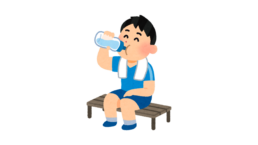Setting New Year’s Resolutions You Can Stick To
Setting New Year’s Resolutions You Can Stick To
Dear Sparkle Community,
As we welcome a new year, many of us see it as a fresh start—a time to set goals and create positive changes in our lives. However, sticking to New Year’s resolutions can be challenging if they’re too ambitious or not well-planned. Here are some tips to help you set realistic resolutions and turn them into lasting habits.

1. Start Small and Specific
Rather than setting vague or overly ambitious goals, focus on achievable, specific ones:
- Example: Instead of “I want to get healthy,” try “I will walk for 30 minutes three times a week.”
- Break It Down: Divide your resolution into smaller, actionable steps that feel manageable.
Sparkle Tip: Success builds momentum—start with a small goal and increase it gradually.
2. Focus on One or Two Goals
Trying to tackle too many resolutions at once can be overwhelming. Prioritize the ones that matter most:
- Choose goals that align with your values and have the biggest impact on your well-being.
- Commit to one or two changes rather than a long list.
Sparkle Tip: Write down your goals and keep them somewhere visible as a daily reminder.
3. Make Your Goals Measurable
Define how you’ll track progress and know when you’ve achieved your resolution:
- Track Progress: Use a journal, calendar, or app to log your efforts.
- Set Milestones: Celebrate small wins along the way to stay motivated.
Sparkle Tip: Fitness trackers and habit-tracking apps can be great tools for staying accountable.
4. Be Kind to Yourself
Slip-ups are normal and don’t mean you’ve failed:
- Practice Self-Compassion: Acknowledge setbacks and focus on getting back on track.
- Learn from Challenges: Identify what made it hard to stick to your goal and adjust your plan if needed.
Sparkle Tip: Progress is more important than perfection. Celebrate every step forward.
5. Choose Resolutions That Support Your Health
Consider goals that enhance both your physical and mental well-being:
- Exercise Regularly: Find an activity you enjoy, whether it’s yoga, dancing, or walking.
- Improve Nutrition: Add one more serving of fruits or vegetables to your daily meals.
- Practice Mindfulness: Dedicate 10 minutes a day to meditation or deep breathing exercises.
Sparkle Tip: Visit Sparkle Pharmacy for tools and advice to support your health-focused resolutions.
Make 2024 Your Healthiest Year Yet
The start of a new year is an opportunity to create positive changes, but it’s also important to pace yourself and enjoy the journey. By setting realistic goals and focusing on steady progress, you can make resolutions that truly stick.
Here’s to a Happy and Healthy New Year!
From all of us at Sparkle Pharmacy, we’re here to support you every step of the way. Whether you need advice, wellness products, or encouragement, stop by and let us help you make 2024 your best year yet.
Warmly,
Mr. Sparkle
Coping with the Holiday Blues
Dear Sparkle Community,
The holiday season is often portrayed as a time of joy and celebration, but for many, it can bring feelings of loneliness, stress, or sadness—commonly referred to as the "holiday blues." If you’re finding it difficult to embrace the festive spirit, know that you’re not alone. Here are some tips to help you manage these feelings and find moments of peace and joy this season.

1. Acknowledge Your Feelings
It’s okay to feel sad or stressed during the holidays. Acknowledging your emotions is the first step toward managing them:
- Allow Yourself to Grieve: If you’ve lost someone or experienced significant changes, give yourself permission to feel and process those emotions.
- Avoid Suppressing Emotions: Talk to someone you trust, whether it’s a friend, family member, or therapist.
Sparkle Tip: Journaling can be a helpful way to explore your feelings and gain clarity.
2. Set Realistic Expectations
Holiday perfection is a myth. Focus on what truly matters:
- Simplify Your Plans: Don’t overcommit to events or try to please everyone. Prioritize meaningful connections.
- Stick to a Budget: Financial stress can amplify the blues. Plan thoughtful but affordable gifts or gestures.
- Take Breaks: Allow yourself downtime to recharge, even if it’s just 10 minutes of quiet reflection.
Sparkle Tip: Create a "holiday priority list" to focus on what brings you the most joy.
3. Stay Connected
Isolation can worsen feelings of sadness. Reach out to others:
- Connect Virtually: If distance or circumstances prevent in-person visits, schedule video calls with loved ones.
- Volunteer: Helping others can boost your mood and create a sense of purpose.
- Join Community Events: Attend local gatherings or workshops to meet new people and feel less alone.
Sparkle Tip: Check out Sparkle Pharmacy’s community events board for opportunities to connect.
4. Take Care of Your Physical Health
Your physical well-being impacts your mental health:
- Stay Active: Exercise releases endorphins that can improve your mood. Try indoor workouts or brisk walks.
- Eat Nourishing Foods: While holiday treats are fine in moderation, focus on balanced meals to sustain energy.
- Get Enough Sleep: Lack of rest can heighten stress and sadness. Establish a calming bedtime routine.
Sparkle Tip: Consider natural supplements like melatonin or magnesium if you’re struggling with sleep (consult our pharmacists first!).
5. Practice Gratitude
Gratitude can shift your focus from what’s missing to what you have:
- Keep a Gratitude Journal: Write down three things you’re thankful for each day.
- Express Appreciation: Tell loved ones how much they mean to you, whether through a card, call, or simple gesture.
Sparkle Tip: Gratitude is contagious—sharing it often inspires others to do the same.
Remember, You’re Not Alone
The holiday blues are temporary, and support is available if you need it. Be kind to yourself and prioritize self-care. If your feelings persist or worsen, don’t hesitate to reach out to a mental health professional.
Wishing You Peace and Comfort This Holiday Season
From all of us at Sparkle Pharmacy, we’re here to support your wellness journey. Visit us for resources, advice, or simply a listening ear. Together, we can make this season a little brighter.
Warmly,
Mr. Sparkle
Navigating Holiday Eating: Balance Without Guilt
Dear Sparkle Community,
The holiday season is here, and with it comes delicious meals, festive treats, and gatherings filled with food. While enjoying these special moments is important, many of us worry about overindulgence and its impact on our health. The good news? You can savor the holiday season without guilt by following a few simple strategies for balance and mindfulness.

1. Mindful Eating Tips for Holiday Meals
Mindful eating helps you enjoy every bite while avoiding overindulgence:
- Listen to Your Body: Eat when you’re hungry and stop when you’re satisfied, not overly full.
- Focus on Your Food: Avoid distractions like TV or phones during meals. This helps you recognize when you’re full.
- Take Small Portions: Sample a little bit of everything you love instead of piling your plate high.
- Slow Down: Chew thoroughly and savor each bite. This not only aids digestion but also helps you feel more satisfied.
Sparkle Tip: Practice gratitude for your meals—it enhances your mindfulness and enjoyment.
2. Healthy Alternatives to Classic Holiday Dishes
You don’t have to sacrifice flavor to stay healthy. Try these swaps:
- Mashed Potatoes: Use cauliflower or sweet potatoes for added nutrients and fewer calories.
- Stuffing: Opt for whole-grain bread and add extra vegetables for a fiber boost.
- Desserts: Try recipes that use natural sweeteners like honey or fruit instead of refined sugar.
- Drinks: Choose sparkling water with a splash of cranberry juice over sugary sodas or cocktails.
Sparkle Tip: Incorporate fresh herbs and spices to elevate flavors naturally without extra salt or fat.
3. Staying Active During Colder Months
Balance holiday indulgence with regular activity to support your health:
- Take Post-Meal Walks: A short walk after meals aids digestion and helps manage blood sugar levels.
- Embrace Winter Activities: Ice skating, snowshoeing, or even a snowball fight are fun ways to stay active outdoors.
- Indoor Workouts: On colder days, try yoga, dance, or bodyweight exercises at home.
- Make It Social: Encourage family and friends to join in for a group activity or fitness challenge.
Sparkle Tip: Staying active also helps reduce holiday stress and improve sleep quality.
Enjoy the Holidays, Guilt-Free
The holidays are a time to connect, celebrate, and enjoy. By practicing balance, making mindful choices, and staying active, you can indulge in holiday favorites while supporting your overall health. Remember, it’s not about perfection—it’s about progress and enjoying the journey.
Wishing You a Joyful and Healthy Holiday Season!
From all of us at Sparkle Pharmacy, we’re here to help you stay well and make the most of this festive season. Stop by for more health tips or to explore products that support your holiday wellness goals.
Yours in health,
Mr. Sparkle
Heart Health and Staying Active Indoors
Dear Sparkle Community,
As the winter months set in, staying active and prioritizing heart health can feel challenging. But cold weather shouldn’t stop you from keeping your heart in top shape. Here are some practical tips to help you stay active indoors and maintain your cardiovascular health during this season.

1. At-Home Exercise Routines
Regular physical activity is key to maintaining a healthy heart. Try these easy indoor exercises:
- Cardio Workouts: Activities like jumping jacks, running in place, or using a stationary bike can get your heart pumping.
- Strength Training: Use resistance bands or bodyweight exercises like squats and push-ups to build muscle and improve overall fitness.
- Dance or Aerobics: Turn on your favorite music and move! Dancing is a fun way to stay active.
- Yoga or Pilates: These exercises not only improve flexibility but also reduce stress, which is important for heart health.
Sparkle Tip: Aim for at least 30 minutes of moderate activity most days of the week. Break it into shorter sessions if needed.
2. Using Fitness Trackers for Motivation
Fitness trackers can be a great way to monitor your progress and stay motivated:
- Set Daily Goals: Aim for a specific number of steps, minutes of activity, or calories burned.
- Track Your Heart Rate: Many trackers measure your heart rate, helping you ensure you’re staying in a healthy range.
- Join Challenges: Compete with friends or family to stay accountable and make exercise more engaging.
Sparkle Tip: If you’re new to fitness trackers, visit our pharmacy to explore options and find one that fits your needs.
3. Managing Blood Pressure and Cholesterol During the Holidays
The holiday season often brings indulgent meals and added stress, which can impact heart health. Here’s how to stay on track:
- Limit Sodium Intake: Choose low-sodium options and avoid processed foods where possible.
- Incorporate Heart-Healthy Foods: Opt for whole grains, fruits, vegetables, and lean proteins in your meals.
- Monitor Your Levels: Check your blood pressure regularly and follow your doctor’s advice on cholesterol management.
- Stay Hydrated: Drinking enough water is essential for maintaining good circulation and overall health.
Sparkle Tip: If you’re managing a heart condition, consult with our pharmacists for advice on over-the-counter products or supplements that can support your heart health.
Why Staying Active Matters
Your heart works tirelessly every day, and staying active is one of the best ways to support its health. By finding ways to move indoors, using tools for accountability, and being mindful of your diet, you can keep your heart strong through the winter months and beyond.
Stay Heart-Healthy with Mr. Sparkle and the Sparkle Pharmacy Team!
We’re here to support your health goals every step of the way. For more tips or to explore products that can help with heart health, stop by Sparkle Pharmacy. Let’s keep moving and stay healthy together this winter!
Yours in wellness,
Mr. Sparkle
Gift Guide for Health-Conscious Loved Ones
Dear Sparkle Community,
As the holidays approach, many of us are searching for the perfect gifts to show our loved ones how much we care. What better way to express your thoughtfulness than with gifts that support health and wellness? Whether you’re shopping for fitness enthusiasts, those who cherish self-care, or anyone looking to stay healthy during the winter months, we’ve got you covered. Here are some ideas to inspire your holiday giving this season:

1. Personal Care Kits
Give the gift of self-care with a thoughtfully curated personal care kit. These can include:
- Moisturizers and Lip Balms: Perfect for combating winter dryness.
- Essential Oils or Aromatherapy: To promote relaxation and reduce stress.
- Skincare Products: Like gentle cleansers and nourishing face masks.
- Travel-Size First Aid or Wellness Kits: For on-the-go care during holiday travels.
Sparkle Tip: Visit our pharmacy for pre-made care kits or customize one to suit your loved one’s specific needs.
2. Fitness or Relaxation Tools
Encourage your loved ones to stay active or unwind with these ideas:
- Yoga Mats and Accessories: A great choice for yoga enthusiasts or beginners.
- Resistance Bands or Dumbbells: Compact and versatile fitness tools for home workouts.
- Massage Devices: Such as handheld massagers or foot rollers for post-workout recovery.
- Weighted Blankets: To promote better sleep and reduce anxiety.
Sparkle Tip: Our shop features several relaxation and fitness products—stop by to find something special.
3. Vitamins and Supplements
Support your loved ones’ health from the inside out with:
- Multivitamin Packs: Tailored to their age, gender, or lifestyle needs (check out our VitaGo options!).
- Immunity Boosters: Such as Vitamin C, Zinc, or Echinacea.
- Collagen Powders or Capsules: For skin, hair, and joint health.
- Custom Supplement Kits: Designed for specific health goals, like energy, focus, or recovery.
Sparkle Tip: Our pharmacists can guide you to the right options or help you create a personalized package.
Why Health-Focused Gifts Matter
The holiday season is a time for connection and giving, but it’s also a time when many of us face extra stress and indulgence. Health-focused gifts show your thoughtfulness by prioritizing your loved ones’ well-being, helping them feel their best—not just during the holidays, but all year round.
Happy Holidays from Mr. Sparkle and the Sparkle Pharmacy Team!
We’re here to help make your holiday shopping easier. Stop by our pharmacy to explore these gift ideas and more. Let’s make this season a healthy and joyful one for everyone in our community.
Stay well,
Mr. Sparkle
Natural Ways to Boost Your Energy Without Caffeine
Hello, Sparkle Community!
It’s Mr. Sparkle here, your friendly neighborhood pharmacist from Sparkle Pharmacy. Today, I want to talk about something many of us rely on to jumpstart our mornings and power through the day—caffeine. While that cup of coffee or tea can be a quick fix, too much caffeine can lead to jitters, anxiety, and trouble sleeping. So, what can you do when you need an energy boost but want to skip the caffeine? Let’s explore some natural, healthy ways to keep your energy levels up all day long!
1. Start Your Day with a Nutrient-Rich Breakfast
Breakfast truly is the most important meal of the day, setting the tone for your energy levels. Choose foods that provide a balance of protein, healthy fats, and complex carbohydrates. Here are some great options:
- Oatmeal topped with fruits and nuts
- Greek yogurt with honey and berries
- Whole grain toast with avocado and a poached egg
These meals will keep your blood sugar stable and give you sustained energy throughout the morning.
2. Stay Hydrated
Dehydration can be a hidden energy drainer. Even mild dehydration can leave you feeling tired and sluggish. Keep a water bottle with you and sip throughout the day. If plain water isn’t your thing, try:
- Adding slices of lemon, cucumber, or mint
- Herbal teas like peppermint or chamomile
- Coconut water, which is rich in electrolytes
Aim for at least 8 glasses a day, and more if you’re active or it’s hot outside!
3. Move Your Body
Physical activity can help boost your energy by increasing blood flow and oxygen to your muscles and brain. You don’t need to hit the gym for hours; short bursts of activity can be very effective:
- Take a brisk walk during your lunch break
- Do some light stretching or yoga in the morning
- Try a quick 5-minute exercise like jumping jacks or marching in place
Even a little movement can make a big difference in your energy levels!
4. Snack Smartly
Choose snacks that provide a mix of protein, fiber, and healthy fats to keep your energy steady. Some great options include:
- A handful of almonds or walnuts
- Sliced apple with peanut butter
- Hummus with carrot sticks
Avoid sugary snacks and refined carbohydrates, which can cause a quick spike in energy followed by a crash.
5. Take Short Breaks
Working non-stop can actually make you more tired. Try to take short, frequent breaks to rest and recharge:
- Stand up and stretch every hour
- Take a few minutes to step outside and get some fresh air
- Practice deep breathing exercises to calm your mind and body
These small breaks can help you maintain your energy and focus throughout the day.
6. Practice Deep Breathing
Deep breathing exercises can help increase oxygen levels in your blood, which boosts energy and reduces stress. Try this simple exercise:
- Sit comfortably and close your eyes.
- Inhale slowly through your nose, filling your lungs completely.
- Hold your breath for a count of 3.
- Exhale slowly through your mouth.
Repeat this a few times whenever you’re feeling low on energy.
7. Get a Good Night’s Sleep
No amount of energy-boosting hacks can replace the power of a good night’s sleep. Aim for 7-9 hours of quality sleep each night. To improve your sleep:
- Keep a consistent sleep schedule, even on weekends.
- Create a relaxing bedtime routine, like reading or taking a warm bath.
- Avoid screens at least an hour before bed, as blue light can interfere with your sleep.
8. Include More Superfoods in Your Diet
Certain foods are known to help boost energy naturally. Consider adding these to your diet:
- Leafy Greens: Spinach and kale are rich in iron and B vitamins, which help fight fatigue.
- Chia Seeds: Packed with protein, fiber, and omega-3s, chia seeds provide a steady stream of energy.
- Bananas: A great source of natural sugars, fiber, and potassium, bananas can give you an energy boost without the crash.
9. Listen to Music
Listening to your favorite upbeat songs can be a fantastic way to elevate your mood and energy. Create a playlist of your favorite feel-good tracks and play it when you need a quick pick-me-up.
10. Practice Mindfulness or Meditation
Stress can be a major energy drain. Taking just a few minutes a day to practice mindfulness or meditation can help you relax and refocus your mind, giving you more energy and clarity to tackle your tasks.
A Final Note
Boosting your energy naturally is all about finding what works best for your body and lifestyle. Incorporate some of these tips into your daily routine, and you’ll be well on your way to feeling more energized and vibrant without needing that extra cup of coffee!
Understanding Food Labels
Hello, Sparkle Community!
It’s Mr. Sparkle, your friendly neighborhood pharmacist from Sparkle Pharmacy, here to talk about something that can often be confusing yet is so important to our health: food labels. Navigating through all the numbers, percentages, and ingredients can feel like trying to solve a puzzle. But don’t worry—I’m here to help you make sense of it all!
Why Food Labels Matter
Food labels are there to help us make informed choices about what we eat. They provide vital information about the nutritional content of a product and its ingredients. Understanding them can help you manage your weight, keep track of key nutrients, and avoid ingredients you’re trying to cut back on, like added sugars or unhealthy fats.
Decoding the Basics
Here’s a quick breakdown of the key sections of a food label:
1. Serving Size
The first thing to note is the serving size at the top. All the nutritional information listed on the label is based on this amount. Sometimes a single package contains more than one serving, so it’s important to check this first. If you eat more than the serving size, you’ll need to multiply the numbers to get the total amount you’re consuming.
2. Calories
Next up is the number of calories per serving. Calories provide a measure of how much energy you get from a serving of this food. Depending on your daily energy needs, you may want to consume more or fewer calories.
3. Nutrients to Focus On
- Fats: Look for foods low in saturated and trans fats, as these can increase your risk of heart disease. Aim for healthy fats like those from nuts, seeds, and avocados.
- Cholesterol and Sodium: Keep these numbers in check to support heart health. Too much sodium can raise your blood pressure, while high cholesterol can clog your arteries.
- Carbohydrates: Check for added sugars, which can sneak into many foods under different names (like high fructose corn syrup or cane sugar). Choose whole grains whenever possible.
- Protein: Protein is essential for building and repairing tissues. Foods like beans, nuts, and lean meats are good sources.
- Vitamins and Minerals: Look for foods that provide essential nutrients like calcium, iron, and Vitamin D.
4. % Daily Value (%DV)
This tells you how much of each nutrient is in a serving, based on a daily diet of 2,000 calories. As a general rule:
- 5% DV or less of a nutrient is considered low.
- 20% DV or more of a nutrient is considered high.
Use this to quickly gauge if a food is high or low in a particular nutrient.
Ingredients List: The Fine Print
The ingredients are listed in order of quantity, from most to least. This can help you spot hidden sugars or unhealthy fats. Here are some things to look out for:
1. Added Sugars
Watch out for terms like “sucrose,” “glucose,” “fructose,” “corn syrup,” and “honey.” Even natural-sounding ingredients like “agave nectar” are still added sugars. Ideally, choose products with little to no added sugars.
2. Unhealthy Fats
Avoid foods high in trans fats, often found in partially hydrogenated oils. These fats can raise your bad cholesterol and lower your good cholesterol, increasing the risk of heart disease.
3. Artificial Ingredients
Some labels may contain ingredients you can’t pronounce. These could be preservatives, artificial colors, or flavors. While not all of these are harmful, it’s good to be cautious and prioritize whole, natural foods when possible.
4. Sodium
Sodium is often hidden in processed foods, canned goods, and snacks. Too much can lead to high blood pressure. Look for low-sodium or no-salt-added options.
What to Look For
- Whole Grains: Check for whole grains listed as the first ingredient. They’re more nutritious than refined grains.
- High Fiber: Foods with 3 grams or more per serving are considered a good source of fiber.
- Protein-Rich: Aim for foods with a healthy amount of protein, especially if you’re looking for a snack to keep you full longer.
- Low in Added Sugars and Saturated Fats: These can sneak into your diet in surprising ways, so keep an eye on these numbers.
What to Avoid
- Trans Fats: Avoid them completely. Check the ingredients list for “partially hydrogenated oils.”
- High Fructose Corn Syrup: This is often found in sugary drinks and processed snacks and can contribute to weight gain and other health issues.
- Artificial Preservatives and Colors: Look for foods with simple, natural ingredients.
A Final Note
Understanding food labels can empower you to make better choices for you and your family’s health. It might take a bit of time to get used to reading them, but once you do, it’ll become second nature!
If you have any questions about food labels, nutrition, or anything health-related, don’t hesitate to stop by Sparkle Pharmacy or give me a call. I’m always here to help!
Stay healthy and informed, Sparkle Community
~ Mr. Sparkle
Hydration: How Much Water Do You Really Need Each Day?
Hello, Sparkle Community!
I’m Mr. Sparkle, your friendly neighborhood pharmacist, and today I want to chat about something simple but incredibly vital: hydration. You’ve probably heard the advice to “drink eight glasses of water a day,” but how much water do we really need to stay healthy and hydrated?
Why Hydration Matters
Water is essential for every cell, tissue, and organ in our bodies. It helps regulate temperature, lubricates our joints, and aids in digestion. Staying hydrated keeps our energy levels up, helps with concentration, and supports overall health. But the amount we need can vary based on a few key factors.
Factors That Influence Hydration Needs
- Age and Gender: Generally, men require more water than women, and older adults may need to pay closer attention to hydration, especially if they’re taking medications that can increase fluid loss.
- Activity Level: If you’re active, your body loses water through sweat. So, if you’re hitting the gym, going for a walk, or even gardening, you’ll need more water.
- Weather and Environment: Hot or humid weather means you’ll sweat more, requiring you to up your water intake. Air-conditioned or heated indoor environments can also be dehydrating.
- Health Conditions: Certain conditions like kidney stones, bladder infections, or even the common cold can affect your hydration needs.
- Diet: High-salt or high-protein diets can increase your need for water. Caffeinated and alcoholic beverages, while hydrating to some extent, can act as diuretics and increase fluid loss.
How Much Water Should You Really Drink?
The National Academies of Sciences, Engineering, and Medicine recommend:
- About 3.7 liters (125 ounces) for men per day.
- About 2.7 liters (91 ounces) for women per day.
This total includes all fluids from drinks and food. Yes, foods like fruits and vegetables contribute to your daily intake!
Signs of Dehydration
It’s important to know the signs of dehydration, which include:
- Dark yellow urine
- Dizziness or lightheadedness
- Dry mouth and lips
- Fatigue
- Headache
If you notice any of these symptoms, it’s a good idea to sip some water!
Tips to Stay Hydrated
- Carry a Water Bottle: Keep a reusable bottle with you throughout the day. If it’s within reach, you’re more likely to drink.
- Eat Hydrating Foods: Include water-rich foods like cucumbers, watermelon, and oranges in your diet.
- Set Reminders: Use your phone or a hydration app to remind you to take a sip every hour.
- Flavored Water: If plain water isn’t your thing, add some flavor with a slice of lemon, lime, or even a few mint leaves.
- Listen to Your Body: Thirst is a signal that your body needs water, but don’t wait to get thirsty to drink!
Special Considerations for Seniors
As we age, our sense of thirst may decrease, making it even more crucial to consciously drink water throughout the day. Seniors should aim to sip small amounts of water regularly and avoid waiting until they’re thirsty. If you have a loved one in this age group, remind them to keep hydrated!
When to Seek Help
If you or someone you know is experiencing severe dehydration symptoms like extreme thirst, confusion, or fainting, seek medical attention immediately.
A Final Word
Hydration is a simple yet powerful way to support your health every day. Make it a habit to keep your water intake up, and your body will thank you!
As always, if you have any questions about your health or hydration needs, feel free to stop by Sparkle Pharmacy or give me a call. I’m here to help keep our community happy and healthy.
~ Mr. Sparkle
The Benefits of Journaling for Mental Health
Hello Sparkle Pharmacy Community!
In today’s fast-paced world, finding a moment of calm can sometimes feel like a challenge. Amid the hustle and bustle, one simple yet powerful practice that can offer a wealth of mental health benefits is journaling. As your friendly pharmacist, I’m excited to share how journaling can become a valuable tool for enhancing your mental well-being.
What is Journaling?
Journaling involves writing down your thoughts, feelings, and experiences. It’s a personal practice that can be done in various ways—whether it’s through a classic notebook, a digital app, or even voice recordings. The key is to find a method that works best for you.
How Journaling Benefits Mental Health
- Reduces Stress and Anxiety Journaling provides a safe space to express your emotions and thoughts, which can help reduce stress and anxiety. By putting your feelings on paper, you can process and release them, rather than letting them build up inside.
Tip: Try writing about what’s causing you stress and any possible solutions or coping strategies. This can help you gain clarity and feel more in control.
- Enhances Self-Awareness Regular journaling helps you become more in tune with your emotions and thought patterns. By reflecting on your daily experiences and feelings, you gain insight into your behaviors and triggers.
Tip: Keep a daily log of your mood and what might have influenced it. Over time, patterns may emerge that can help you understand your emotional responses better.
- Improves Emotional Intelligence Journaling can improve your ability to recognize and understand your own emotions, as well as those of others. This heightened emotional intelligence can lead to better relationships and communication skills.
Tip: Write about interactions with others and how they made you feel. Reflect on any emotions or reactions that came up and how you might handle similar situations in the future.
- Boosts Mood and Mental Clarity Writing about positive experiences and things you’re grateful for can boost your mood and overall outlook on life. Journaling helps shift your focus from negative thoughts to positive aspects of your day.
Tip: Start or end your journaling session with a gratitude list. Jot down three things you’re thankful for each day to foster a positive mindset.
- Helps with Problem-Solving When faced with a challenge, journaling allows you to explore different solutions and perspectives. By brainstorming and reflecting on possible outcomes, you can approach problems with a clearer, more organized mindset.
Tip: Write about a specific problem you’re facing and outline potential solutions. This exercise can help you weigh your options and make more informed decisions.
- Encourages Mindfulness Journaling can be a form of mindfulness practice, as it encourages you to slow down and be present with your thoughts and feelings. This practice can enhance your ability to stay grounded and focused.
Tip: Set aside a few minutes each day to write mindfully about your current feelings and experiences. This can help you stay connected to the present moment.
- Facilitates Personal Growth Over time, your journal can serve as a record of your personal growth and achievements. Reviewing past entries can remind you of how far you’ve come and reinforce a sense of accomplishment.
Tip: Periodically read through previous journal entries to reflect on your progress and celebrate your milestones.
Getting Started with Journaling
If you’re new to journaling, here are a few tips to help you get started:
- Find Your Medium: Choose a journaling method that feels comfortable—whether it’s a traditional notebook, a digital app, or even audio recordings.
- Set Aside Time: Dedicate a specific time each day to journal, even if it’s just a few minutes. Consistency can help you build the habit.
- Be Honest: Write openly and honestly about your thoughts and feelings. Remember, your journal is a private space for you to express yourself without judgment.
- Keep It Simple: Don’t worry about grammar or structure. The goal is to express yourself, not to produce a polished piece of writing.
When to Seek Additional Support
While journaling is a valuable tool, it’s important to remember that it’s just one part of a broader approach to mental health. If you’re struggling with persistent feelings of sadness, anxiety, or other mental health challenges, don’t hesitate to seek professional help. Your mental well-being is incredibly important, and there are many resources available to support you.
Incorporating journaling into your daily routine can offer numerous benefits for your mental health and overall well-being. By taking time to reflect, process, and express yourself, you’re investing in a healthier, more balanced you.
Take care and happy journaling,
~ Mr. Sparkle
How to Build a Daily Routine That Supports Mental Health
Hello Sparkle Pharmacy Community!
Life can sometimes feel like a rollercoaster, with its ups and downs, twists, and turns. But there's something powerful about routines that can help bring balance and calm to our lives. As your community pharmacist, I want to share some ideas on how to build a daily routine that supports your mental health and well-being. The great thing about routines is that they give us structure and a sense of control. Establishing a routine can be a real game-changer when it comes to improving mental health.
Let’s explore how you can craft one that helps you feel more grounded and resilient every day.
1. Start Your Day with Mindfulness
One of the best ways to set a positive tone for your day is to incorporate mindfulness into your morning routine. Whether it’s a few minutes of meditation, deep breathing, or even stretching, mindfulness helps calm the mind and reduce stress. It allows you to be present, and that's important for mental clarity.
Tip: Even just taking 5-10 minutes in the morning to focus on your breathing or to practice gratitude can make a big difference. You could reflect on what you’re grateful for or set a simple intention for the day.
2. Fuel Your Body with Nutritious Food
What you eat plays a key role in how you feel mentally. A balanced diet rich in fruits, vegetables, whole grains, and proteins provides the nutrients your brain needs to function at its best. Certain foods, like those rich in omega-3 fatty acids (think fish, flaxseeds, or walnuts), have been shown to improve mood and reduce symptoms of anxiety and depression.
Tip: Start your day with a healthy breakfast. A smoothie loaded with fruits, greens, and healthy fats is a great way to fuel your brain and body for the day ahead.
3. Incorporate Physical Activity
Exercise is one of the most effective ways to boost mental health. Regular physical activity releases endorphins, which are your body’s natural mood elevators. Even a short walk, stretching, or a quick home workout can improve your mood and reduce stress.
Tip: Try to build at least 30 minutes of movement into your day. It could be a brisk walk, a yoga session, or dancing to your favorite music in the living room. The key is consistency, not perfection!
4. Stay Connected with Others
Human connection is vital for mental health. Make time in your daily routine to connect with family, friends, or colleagues. Even small interactions, like a phone call or a text message, can help you feel more supported and less isolated.
Tip: Schedule time to reach out to loved ones, even if it’s just a quick check-in. Social support can be one of the most effective ways to boost your mental well-being.
5. Take Breaks Throughout the Day
Life can get busy, but it’s important to schedule short breaks to give your mind a rest. Whether you’re working, studying, or handling daily tasks, taking a few moments to pause and reset can reduce feelings of overwhelm.
Tip: Try the "Pomodoro Technique"—work for 25 minutes, then take a 5-minute break. During that break, do something relaxing or enjoyable, like stretching, taking deep breaths, or sipping some herbal tea.
6. Create a Wind-Down Routine Before Bed
Good sleep is crucial for mental health, and having a consistent nighttime routine can improve the quality of your sleep. Engage in calming activities before bed, like reading, listening to soothing music, or taking a warm bath.
Tip: Limit your screen time before bed, as the blue light emitted by devices can interfere with your body’s ability to wind down and produce melatonin, the sleep hormone.
7. Prioritize Self-Care
Mental health routines should also include time for self-care. This doesn’t need to be anything extravagant—sometimes, self-care is simply taking a few moments to do something you enjoy or relaxing in a way that feels restorative.
Tip: Identify a small self-care activity that brings you joy. Whether it’s reading a book, journaling, gardening, or practicing a hobby, make sure it’s part of your daily routine.
8. Practice Gratitude Before Bed
Ending your day with a sense of gratitude can have a positive impact on your mental health. Taking a few minutes to reflect on the good things in your life helps shift your mindset toward the positive, reducing stress and anxiety.
Tip: Before going to sleep, write down three things you're grateful for or reflect on something positive that happened during the day. It’s a simple practice, but over time it can train your brain to focus on the positives.
When You Need Help, Don’t Hesitate to Reach Out
Routines can be a helpful tool in maintaining mental health, but it’s important to remember that everyone has different needs. If you're feeling overwhelmed or struggling with anxiety, depression, or any mental health concerns, don’t hesitate to reach out for professional help. Your mental well-being is just as important as your physical health, and I’m here to support you in any way I can.
Building a routine that supports mental health takes time, but the benefits are truly worth the effort. By incorporating small, healthy habits into your daily life, you’ll gradually feel more balanced, focused, and resilient.
Take care of yourself,
~ Mr. Sparkle















